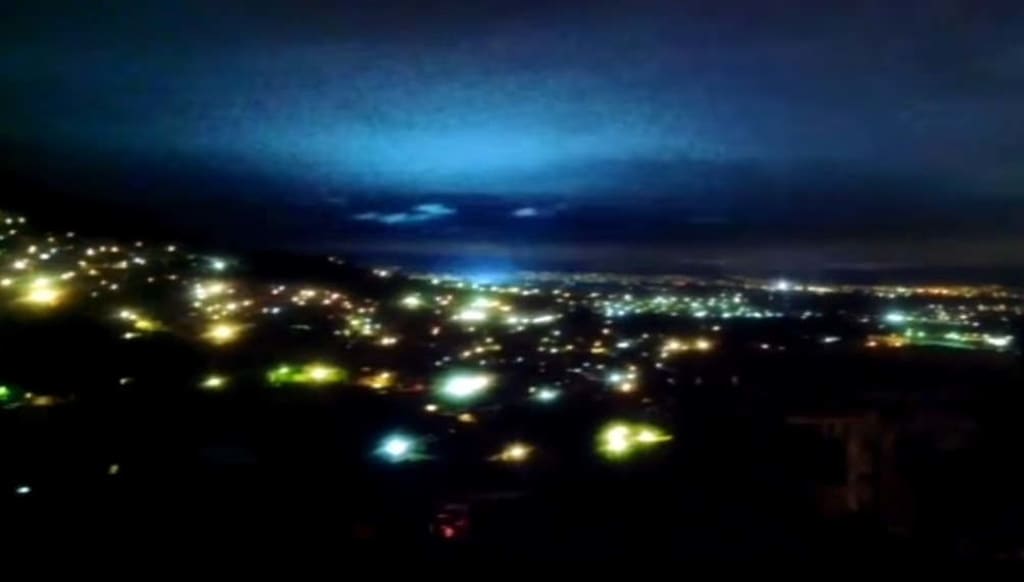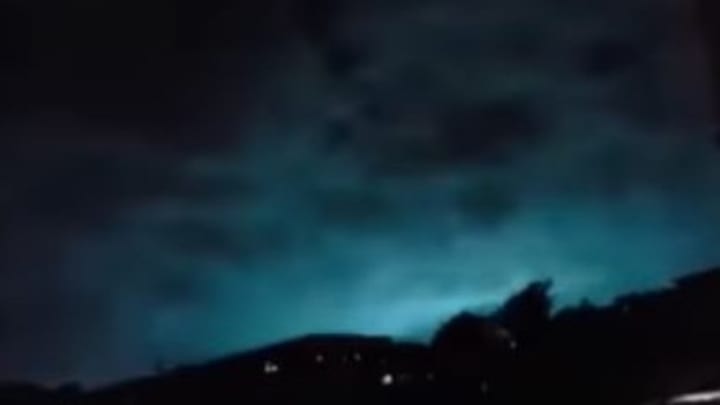
Earthquake lights, also known as seismic lights, are a natural phenomenon that occur during earthquakes. These lights can manifest in various forms such as flames, flashes, and glows. The lights can appear in the sky, on the ground, or emanate from rocks. Scientists have been studying these lights for years, but they are still not fully understood.
Theories on the Cause of Earthquake Lights
There are several theories on the cause of earthquake lights. One theory suggests that the lights are caused by the release of energy during an earthquake. This energy ionizes the atmosphere and causes it to emit light. Another theory proposes that piezoelectricity, a process where certain materials produce an electric charge when subjected to mechanical stress, is responsible for the lights.
As mentioned in the previous section, there are several theories on the cause of earthquake lights. One theory suggests that the lights are caused by the release of energy during an earthquake. When tectonic plates shift and release energy, it is believed that the energy ionizes the atmosphere and causes it to emit light.
Another theory proposes that piezoelectricity is responsible for the lights. Piezoelectricity is a process where certain materials produce an electric charge when subjected to mechanical stress. It is believed that the stress caused by the movement of tectonic plates during an earthquake can generate enough electrical charge to cause the lights to appear.
While both of these theories are widely accepted, the exact mechanism behind earthquake lights is still not fully understood. Some scientists believe that there may be other factors at play, such as the properties of the rock or the composition of the atmosphere. Further research is needed to better understand the cause of earthquake lights and the factors that contribute to their appearance.Despite the lack of a conclusive explanation for the phenomenon of earthquake lights, researchers have made some progress in recent years. One interesting development is the use of seismographs and other scientific instruments to measure and analyze earthquake lights.
In one study conducted in 2014, researchers used a combination of seismographs, infrasound sensors, and video cameras to study earthquake lights that appeared during the 2007 Pisco earthquake in Peru. The team found that the lights were correlated with the onset of seismic activity and occurred at the same time as the largest and most intense earthquakes. This provides support for the theory that earthquake lights are caused by the release of energy during an earthquake.
Other research has focused on the properties of the rocks and minerals in the Earth's crust. It is known that certain minerals, such as quartz and feldspar, can produce light when subjected to mechanical stress. Some scientists believe that the stress of an earthquake may cause these minerals to emit light, contributing to the appearance of earthquake lights.
In addition to these theories, there are also many reported observations and anecdotal evidence of earthquake lights. Some witnesses have described seeing the lights before, during, and after earthquakes, while others have reported seeing the lights without any apparent seismic activity. This has led some researchers to suggest that there may be multiple mechanisms at play, and that different types of earthquake lights may be caused by different factors.
Overall, while the cause of earthquake lights remains a mystery, researchers continue to make progress in understanding this fascinating natural phenomenon. With new technologies and innovative research methods, we may one day have a better understanding of the forces that drive earthquakes and the strange and mysterious lights that often accompany them.
Historical Accounts of Earthquake Lights
Historical accounts of earthquake lights date back centuries, with reports of unusual lights appearing during seismic activity recorded in many cultures around the world. These accounts often describe the lights as being bright, colorful, and diffuse, and appearing in the sky or on the ground.
One of the earliest recorded accounts of earthquake lights comes from China in the year 373 AD. According to historical records, a bright light appeared in the sky during a major earthquake, and was visible for several days afterward. Similar accounts of earthquake lights have been recorded in many other cultures, including ancient Greece, Japan, and South America.
In the 18th and 19th centuries, European and North American scientists began to take a more systematic approach to the study of earthquake lights. Many of these researchers were skeptical of the phenomenon and sought to explain it in terms of known natural phenomena, such as lightning or auroras. However, other scientists were convinced that earthquake lights were a distinct and mysterious phenomenon, and sought to understand their cause and significance.
One notable example of this type of research was conducted by the American geologist Clarence Dutton, who investigated earthquake lights in the late 1800s. Dutton observed that earthquake lights were often associated with unusual geological features, such as faults or hot springs, and suggested that they could provide important clues to the nature of earthquakes.
Despite the efforts of early researchers, however, the cause of earthquake lights remained elusive for many years. It was not until the development of modern scientific instruments and techniques that researchers were able to make significant progress in understanding this fascinating natural phenomenon. Today, earthquake lights continue to capture the imaginations of scientists and the public alike, and remain a subject of ongoing research and investigation.

Scientific Studies on Earthquake Lights
In recent years, scientists have made significant progress in studying earthquake lights, thanks to advances in technology and the development of new research techniques. One notable example of this is the use of seismographs and other scientific instruments to detect and analyze earthquake lights.
In one study conducted in 2014, a team of researchers used a combination of seismographs, infrasound sensors, and video cameras to study earthquake lights that appeared during the 2007 Pisco earthquake in Peru. The team found that the lights were correlated with the onset of seismic activity and occurred at the same time as the largest and most intense earthquakes. This provides support for the theory that earthquake lights are caused by the release of energy during an earthquake.
Other researchers have focused on the properties of the rocks and minerals in the Earth's crust as a potential cause of earthquake lights. Certain minerals, such as quartz and feldspar, are known to produce light when subjected to mechanical stress. Some scientists believe that the stress of an earthquake may cause these minerals to emit light, contributing to the appearance of earthquake lights.
In addition to these studies, researchers have also used satellite imagery and other remote sensing technologies to investigate earthquake lights. These techniques can provide valuable insights into the frequency and distribution of earthquake lights, as well as their possible connection to other geological features, such as faults or hot springs.
Despite these scientific advances, however, the cause of earthquake lights remains a mystery, and researchers continue to explore new avenues of investigation. Some scientists believe that the phenomenon may be related to other natural phenomena, such as lightning or atmospheric disturbances, while others suggest that it may be a unique and complex phenomenon that requires a more interdisciplinary approach to study.
Overall, the scientific study of earthquake lights is an exciting and rapidly evolving field, with many new discoveries and insights still waiting to be uncovered. As researchers continue to explore this fascinating natural phenomenon, we may one day have a better understanding of the forces that drive earthquakes and the strange and mysterious lights that often accompany them.
Conclusion
In conclusion, earthquake lights are a natural phenomenon that occur during earthquakes. While their cause is still not fully understood, several theories suggest that they are caused by the release of energy or piezoelectricity. Historical accounts of earthquake lights date back centuries, and scientific studies have been conducted to better understand them.
About the Creator
Jack Brel
At Vocal Media, I am excited to be a part of a platform that values creativity and original content. I am confident that my skills and experience will enable me to create impactful campaigns and bring value to the Vocal Media community






Comments
There are no comments for this story
Be the first to respond and start the conversation.